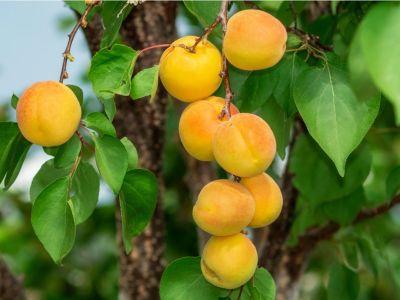What Causes Leucostoma in Apricots?
Leucostoma canker in apricots is caused by two related fungal pathogens: Leucostoma cinctum and Leucostoma persoonii. The pathogens invade the trees only through dead or wounded tissue, usually in late fall and early winter, or late winter and early spring. The disease can enter the tree through scars or injuries on small twigs and wounds on larger branches. The most common infection sites are insect injuries, pruning wounds, and bark or buds damaged or killed by winter cold. Damage by rodents and mechanical damage by equipment also creates an entryway for the disease.
Apricot Leucostoma Canker Symptoms
Diseased bark forms cankers and pimple-like growths that ooze copious amounts of amber gum. The cankers grow larger every year, gradually turning from dark brown to black, with a rotten smell. Usually, a callus forms around the damaged area, thus creating a protective wall. However, the canker may resume growth in late fall or early spring when the tree is dormant. The affected bark shrinks from surrounding healthy bark, eventually drying out, cracking, and sloughing from the tree. Twigs and branches die when they are completely girdled by the cankers. Leaves turn yellow, wilt, and die.
Treating an Apricot with Leucostoma Canker
There are no fungicides currently registered for use against apricot leucostoma canker symptoms, and the disease is notoriously difficult to control. However, the following tips may help prevent the disease, or at least keep it in check. Control pests, especially peach tree borer and oriental fruit moth, as the pests can do serious damage that allows the pathogen to enter. Wrap trees with plastic guards to deter rodents but be sure to remove the guards during the summer. Fertilize properly in early spring but avoid excessive fertilization. Avoid fertilizing late in the season, especially with high nitrogen fertilizers. Late fertilization results in succulent new growth that is highly susceptible to winter damage. Mound soil against the base of the tree to drain water away from the trunk. The soil will also help prevent ice buildup and injury by cold temperatures. Prune apricot trees correctly and at the proper time. Avoid severe pruning. Remove all damaged and dead growth. Burn it immediately to prevent the spread of pathogens. Water properly, using practices that prevent run-off. Careful watering practices are critical in irrigated orchards.
